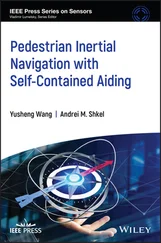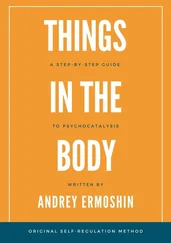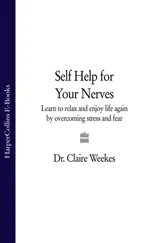1 ...7 8 9 11 12 13 ...22 The brightest example of a psychological “dead-end’ that forms under the influence of the natural mechanisms is a phobia. Frightening information “impresses’ the body to such an extent that a mere reminder about the situation which caused this fright leads to a recurrent reaction of fear, even if the situation is no longer relevant, and a person understands that too.
The problem is that this frightening information led to the triggering emergency protective mechanisms, which do not switch off automatically and get fixed in the psychosomatic profile of a person.
One can use their mind, just like a steering wheel of a vehicle, to navigate through life. However, this principle works only under normal conditions. In extreme situations, automatic single-action safety mechanisms come to our rescue, and once they act like our airbags, moving forward comes to a halt for a certain period.
Healing from phobia does not require a lot of time, but it does call for a special approach: one needs to extract the information that entered the body at a moment of frustration, and now it is set deep in the mind of this person. Greyness or blackness is to be found where it entered the body, and where it moved to, and what it “hit,” and then it should leave the body the same way it came into it. As a rule, it is found in the stomach or in the area of solar plexus where the information tends to hit; then it comes out through the top of the head as black smoke. As a result, a person begins to feel the balance in life and can “steer’ it as he or she did before, that is: using intellect and mature coping mechanisms.
It is rather difficult to imagine any process of restoring balance without this procedure of “letting the smoke out’, which might seem odd at first sight. Without the procedure, “cleaning’ the autonomic depths of our nervous system, the feeling of fear, can last years, even if the central nervous system “came to its senses’ and realized that the danger has passed.
This “object that we discover in our body’ and the way to work with them is described in my previous works (Ermoshin, A. 1999, 2008, 2010).
Later, we will have a look at the most significant elements of this work in case of foreign languages. This way, we will only help our nature, and we will not introduce any alteration, which means we will act only when automatic regulatory processes fail to do their job. Psychocatalysis is a temporary suspension of a “manual control’ that restores normal functioning of a self-regulation mechanism. Reasonable decisions (the work of our intellect) help the profound wisdom of our body find its way out of a dead-end, which the body drove itself into while solving the problem and using the subconscious in-born strategies of problem-solving triggered by emergency situations.
98 dollars
The decisions themselves, when found, seem to be very simple. There is a joke about a mechanic who made a couple of circles around a broken car, listened to the sound of the engine and then hit it once with a hammer. The engine started working well again. The mechanic writes a cheque for 100 dollars. “Why?” “One dollar for using the hammer, one dollar for the hit, and 98 dollars for finding the right place to hit.”
The connection with the processes that take place at the autonomic level of our nervous system is carried out through our sensations. I do not exclude that the processes at this level cannot be regulated by other methods.
Each mental process has its own “autonomic accompaniment’: reaction of the blood vessels, muscles, changes of metabolism and of temperature in the brain or the body, as well as changes in electrical conductivity of the tissues. They can be registered objectively and subjectively.
The body electricity
The body electricity can be considered a detector of internal processes built into our body. I am very grateful to Professor A.A. Tabidze for his collaboration in 2012 when we were establishing the correlation between subjective sensations of the patients and some objective parameters. Prof. Tabidze was measuring the intensity of a current at 12 specific places on the wrist and on the sole of the feet (Nakatani-Klimenko method) before and after the psychotherapeutic sessions that I was conducting. In cases of connection with strong emotions, the test revealed considerable positive dynamics: energy channels manifested levelling of conductivity levels. At the same time, one could also observe a correlation between subjective and objective channels. However, if the problem of the patient had a chronic and not only psychogenetic character, then improvement was not as fast.
Changes in brain activity in different states can be registered by modern methods of neurovisualisation, with the help of positron emission tomography (PET). The results of numerous researches are published online, especially on the websites dedicated to the research in the field of hypnosis.
Areas of hot and cold in our body corresponding to the different states are registered by a thermograph.
It is known that “lie detectors’ actively exploit this phenomenon to confirm, if the information given by the respondent is true or false. However, a person can discover a lot about him/herself without any machines, simply by immersing in one’s sensations. Ability to “self-scan’ seems to be this wonderful mechanism offered by nature in order to give us an opportunity to find out the characteristics of our state of mind and ways to participate in its improvement.
Information provided by our internal sight is as relevant as the data on the radar for an air-traffic control officer responsible for airplane traffic in the sky.
Somatopsychotherapy
Karl Jaspers (1883—1969) noted that “intense concentration on one’s own somatic sensations (like the one described by Schulz in connection with autogenous training) leads to ‘discovering organic worries’ which do not depend on suggestion and are not the fruit of illusory development of normal sensations, but they are available for testing by augmented cognition” (Jaspers, K., 1997, p. 283). He called the field of science that deals with the sensations in the body “somatopsychotherapy’. The earlier name of psychocatalysis was “somatopsychotherapy’.
Sensations that accompany various worries are quite concrete. Just think how feeling happy makes us fly, and this sensation seems to be very strong. The weight of unresolved issues often pressures a person, and it is quite tangible. For each emotion and each psychological process, there is its specific configuration of characteristic sensations.
Concentrations and discharges, rises and falls
When a person closes his or her eyes and starts paying attention to the sensations at the level of the body, then it turns out to be quite easy to determine the places of fullness and emptiness within the internal space. These places often manifest themselves as concentrations of light, air, water, some matter, lava, golden or silver sand or other pleasant substances. However, one can also discover blackness, darkness, and greyness of different degree of density: it can seem like dust, soot, pieces of glass, chips of stones, and other elements, which one perceives as disturbing, unpleasant, and as a foreign object causing tension around itself.
According to people’s perceptions, the body itself may appear as a mighty tree standing on the top of the hill , and, on the contrary, it may look like a scrag . Sometimes, it’s a beautiful vase filled with jewellery , and sometimes it is an old dusty room . All these images send their message as they reflect the state of a person. When we begin paying keen attention to these sensations, it opens up access to the regulation of spontaneously provoked conditions.
Читать дальше












